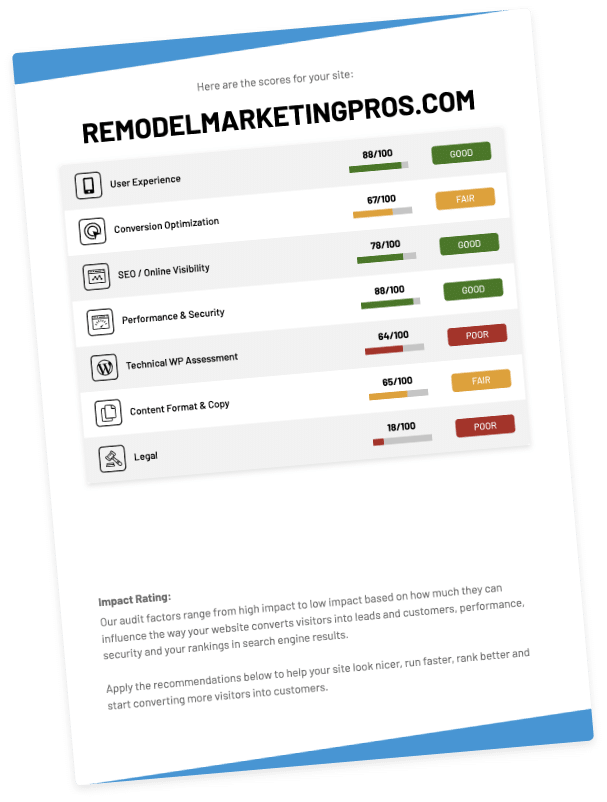Search Engine Optimisation (SEO) has long been the backbone of online visibility. At its heart lies a simple yet crucial component: keywords
Keywords act as the bridge between what people are searching for online and the content you are offering on your website.
Keywords help search engines like Google, determine the relevancy of a webpage to a particular search term.
Long-Tail Keywords Definition
Long tail keywords are specific phrases that typically consist of three or more words and have lower search volumes and competition levels.
The term “long tail” comes from the search demand curve, where these keywords represent a larger number of less frequent search terms.
Unlike broad keywords, which are highly competitive and general, long-tail keywords are more targeted and specific.
This specificity makes them easier to rank for and more likely to attract high quality traffic to your website.
By focusing on long-tail keywords, you can tap into niche markets and connect with users who have precise search intents, ultimately driving more relevant traffic to your site.
Short-Tail vs Long-Tail Keywords
The main difference here is specificity. While low search volume “running shoes” is quite broad and attracts 25x more searches each month, it’s also far more competitive.
On the other hand, “women’s trail running shoes” targets a specific audience looking for a particular type of product.
Even though it attracts fewer searches each month, the traffic it does receive is highly targeted.
This is why it is crucial to understand the distinction between the generic short tail keywords and what are long tail keywords.
Assessing keyword difficulty is essential in this process, as it helps determine the competitiveness of various keywords.
By understanding keyword difficulty, you can identify long-tail keywords that are typically easier to rank for compared to more competitive head terms.
- Short-tail keywords are broad search terms with high competition that are challenging to rank for, especially for smaller websites. They may bring significant traffic but don’t always lead to high conversions.
- Long-tail keywords are specific search terms with lower search volumes but typically higher conversion rates. They attract users with precise needs, making them more likely to engage or buy upon finding relevant results.
Is your site losing potential customers?
All we need is a few details and our team will conduct a full website audit, delivering the results to your inbox within 2 business days.

5 Key Benefits of Long-Tail Keywords
When discussing SEO strategies, the value of long-tail keywords can’t be overstated.
These specific search terms might not capture large volumes of the search volume or traffic, but they offer distinct advantages that can significantly impact a website’s performance.
1. Targeted Traffic
Users who search using long tail queries often have a clear idea of what they want and are closer to making a purchase.
By matching their specific search intent, websites can ensure higher engagement and conversion rates.
It means visitors who find your site through these terms are more likely to take desired actions, be it making a purchase or signing up for a newsletter.
2. Less Competition
Generic search terms come with high search volume along with vast competition, making it tough to rank high in search engine results pages (SERPs).
In contrast, long-tail keywords face fewer competitors, offering an opportunity for better search rankings, especially beneficial for newer sites or those in competitive sectors.
Utilising long tail variations can further reduce competition by targeting more specific phrases, which can be discovered using tools like SEMrush’s Organic Research and Google Autocomplete.
3. Cost-Effective for PPC
For those using pay-per-click (PPC) advertising, long-tail keywords can be a budget-friendly choice.
Their specificity often means lower bidding costs and given their targeted nature, they frequently deliver a commendable return on investment.
4. Suits Voice Search & Conversational Queries
With the growing use of voice searches through digital assistants and smart devices, users are posing more conversational queries.
These spoken searches tend to mirror long-tail keywords in their specificity, making it vital to consider them in SEO strategies.
5. Facilitates Content Creation
Focusing on long-tail keywords provides insights into users’ specific needs and queries.
This knowledge proves beneficial for content creation, as you can tailor articles, videos or other materials to directly address and answer those queries.
Crafting blog posts optimised for long-tail keywords can drive traffic and engagement while maintaining content quality and relevance.

User Intent
Grasping the user intent or the reason someone conducts a specific search, is crucial in modern SEO.
Long-tail keywords often serve as a window into this intent, revealing more about a user’s goals and the stage they’re at in their decision-making process.
Long tails, which are longer, less competitive search terms typically consisting of three or more words, reveal user intent and specific needs, making them strategically advantageous for improving SEO rankings.
Informational Intent
Often, users begin their online journey looking for answers or to learn about a topic.
Long-tail keywords with informational intent might include terms such as “how to care for indoor plants” or “what are the health benefits of green tea”.
These searches indicate a user’s desire for knowledge rather than an immediate intention to purchase.
Navigational Intent
Users with navigational intent are generally looking for a specific page url, website or page.
Examples of long-tail keywords in this category might be “White Peak Digital contact page” or “best summer recipes on Taste”.
These users already have a clear destination in mind; they’re using search engines as a shortcut to get there.
Transactional Intent
When users are ready to make a purchase, sign up or engage in a transaction, they might use long-tail keywords that reflect this readiness.
Examples could include “buy leather work boots size 10” or “best deals on DSLR cameras Brisbane”.
These keywords suggest a high likelihood of conversion, as the user has moved from general browsing to a specific intention to act.
Commercial Investigation
Sometimes users are in a decision making phase, intending to buy soon but still weighing their options.
Long-tail keywords like “best smartphones under $800 Australia” or “top rated eco-friendly yoga mats” indicate a user seeking comparisons or reviews, bridging the gap between information gathering and transactional intent

How to Find Long-Tail Keywords
Finding the right long-tail keywords for your content isn’t just about extending your primary keyword with additional words.
It’s about understanding your audience, their queries and the specific details they’re searching for.
While long-tail keywords often have low search volumes, they can still be highly effective in SEO strategies by attracting high quality traffic and improving conversion rates.
Let’s explore some effective strategies to find long-tail keywords.
Keyword Research Tools
Popular tools like Ahrefs & Semrush can provide an enormous amount of long-tail keyword suggestions.
By entering a primary keyword here, these tools can generate a list of longer, related search terms that users are typing into search engines.
Google’s “Related Searches”
At the bottom of Google’s search results page, you’ll often see a related searches section.
This area can be a goldmine for long-tail keyword ideas, as it showcases queries that users are also searching for in relation to your main and long tail of keyword ideas and phrases.
Answer the Public
Answer The Public is a brilliant free tool for uncovering questions people ask around a specific topic.
By entering a primary keyword, you’ll receive a visual map of questions, prepositions and comparisons, all of which can guide your long-tail keyword strategy.
Social Media & Forums
Platforms like Quora, Reddit and industry specific forums can be beneficial.
By observing the questions and topics people discuss, you can identify long-tail keywords that might not appear in traditional keyword tools but are still relevant to your audience.
These social platforms can also help you identify a new and trending topic before it appears elsewhere, giving you a head start over your competition.
Competitor Content
Review the content on competitor websites who rank well in your industry.
While you shouldn’t copy their content, you can gain insights into the specific long tail keywords and-tail phrases they’re targeting, which can inspire your own long tail keyword research and SEO strategy.
Not sure where to start? Get in touch with our Brisbane SEO experts who do this every day for some of the biggest brands in Australia!

How to Implement Long-Tail Keywords
Once you’ve identified the most long tail keywords and-tail keywords relevant to your website and audience, the next crucial step is their proper implementation.
Utilising these keywords correctly will enhance your content’s visibility and potential to be found online organically.
Avoid Keyword Stuffing
The key is to ensure that long-tail keywords flow naturally within your content. Whether it’s in a blog post, posts, product descriptions or landing pages, you need to avoid keyword stuffing.
Instead, incorporate them into sentences where they make sense and add value.
Optimise Meta Descriptions & Titles
Your webpage’s title and meta description are prime spots for long-tail keywords.
They not only inform search engines about your page’s content but also entice users when your page appears in search results.
Leverage Subheadings
Subheadings break up your content, making it more readable.
Incorporating long-tail keywords in H2 or H3 tags can emphasise why long and medium tail keywords are important and their importance both for readers and search engine crawlers.
Use Image Alt Text
If your content contains images, ensure you use relevant keywords or long-tail keywords in the image alt text.
It not only helps on-page SEO but also improves accessibility for users relying on screen readers.
Update Existing Content
Revisit older content and find opportunities to incorporate new long-tail keywords.
This strategy can give your existing articles or pages a fresh SEO boost without the need to create brand new content.
Write High-Quality Content
Always remember, while keywords are vital, the quality of your content is paramount.
Aim to provide valuable and informative content where relevant long tail keywords and-tail keywords naturally fit and serve the reader’s intent.
Monitor & Adjust
SEO isn’t a set-and-forget game. Regularly monitor the performance of your rankings and keywords using tools like Google Analytics & Google Search Console.
If certain long-tail keywords aren’t performing as expected, reassess and tweak your content strategy accordingly.

Future Trends in Keyword Research
To ensure your content remains visible and relevant, it’s vital to stay up-to-date with the latest trends in keyword research tools.
Rise of Voice Search
With the popularity of smart speakers and voice-activated assistants like Siri and Alexa, more users are conducting voice searches then ever before.
These searches tend to be conversational and longer in nature. Adapting to this change means optimising for high search volume with natural, voice-friendly long-tail keywords.
Semantic Search & Intent
Google and other search engines are increasingly focusing on understanding the intent behind a search query rather than just the specific words used.
This means a shift from exact-match keywords broad keyword, to keyword variations for context and topic-based content.
Enhanced Local SEO
As mobile searches grow, so does the importance of local SEO. People often search for businesses “near me” or with a specific location.
Optimising for local long-tail keywords can increase visibility for businesses targeting a regional audience.
Pro Tip: Reach out to our Brisbane local SEO team if you have any questions.
User Experience & SERP Behaviour
As search engine algorithms become more sophisticated, factors like bounce rate, time spent on page and user engagement will play a more significant role.
This means not just getting users to your site, but ensuring the website design and content is engaging enough for them to stay and interact.
Content Clusters
Instead of isolated posts or pages around specific keywords, the future will see a rise in ‘content clusters’.
This approach involves creating a pillar content piece and related subtopics, all interlinked, providing comprehensive coverage of a subject.
Wrapping Up
Long-tail keywords play a pivotal role in connecting websites with their target audience.
Embracing these specific search terms can not only increase organic traffic but can also lead to higher conversion rates.
For businesses aiming to achieve meaningful online engagement and better visibility, prioritising long-tail keywords is a key strategy.
To your success,
Jackson




